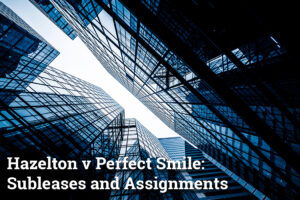Commercial Real Estate
Smart Budgeting: Cost-Saving Tips for Lawyers in Coworking Spaces
For solo practitioners and small firms, coworking spaces offer flexibility and reduced overhead—but smart budgeting can take those savings even further. 💼✨
Here are a few practical tips to keep your legal practice lean and efficient:
🔹 Share Resources – Split costs for legal research tools, admin support, or receptionist services with fellow lawyers in the space.
🔹 Leverage Free Tools – Use free or low-cost legal tech for time tracking, invoicing, and client communication—many integrate seamlessly with coworking Wi-Fi and devices.
🔹 Plan Your Time – Book meeting rooms only when needed. Avoid last-minute rentals which can be more expensive.
🔹 Use Off-Peak Hours – If your coworking space offers lower rates during evenings or weekends, adjust your schedule accordingly.
🔹 Track Every Expense – Use apps to monitor spending. Small daily costs add up—keeping tabs helps you stay within budget.
A strategic approach to budgeting can help you grow your practice without growing your expenses. 💡
Ethical Considerations When Using Technology in Legal Practice
Technology is transforming the legal industry, streamlining workflows, improving client communication, and enhancing research capabilities. However, with these advancements come significant ethical considerations that legal professionals must navigate carefully. Here are some key ethical concerns when integrating technology into legal practice:
1. Confidentiality and Data Security
Lawyers have a duty to protect client information, and the increasing use of cloud storage, AI-powered legal tools, and digital communication channels raises security risks. It’s essential to implement strong cybersecurity measures, such as encryption, multi-factor authentication, and secure client portals, to prevent data breaches and unauthorized access.
2. Competence in Technology Use
The legal profession requires lawyers to maintain competence not only in legal matters but also in the technologies they use. This means staying updated on new legal tech solutions, understanding their limitations, and ensuring they enhance, rather than compromise, professional responsibilities.
3. AI and Automation Bias
Artificial intelligence is increasingly being used for legal research, contract analysis, and even predictive analytics. However, AI systems can inherit biases from their training data, potentially leading to unfair outcomes. Lawyers must critically assess AI-driven insights and ensure that automated tools do not replace human judgment in ethical decision-making.
4. Client Communication and Virtual Representation
Virtual meetings and digital communications have become the norm, but they present challenges in maintaining professionalism, privacy, and attorney-client privilege. Lawyers should ensure that remote consultations and online legal services comply with jurisdictional rules and ethical standards.
5. Unauthorized Practice of Law
The rise of online legal platforms and AI-driven legal assistance tools raises concerns about the unauthorized practice of law. Legal professionals must ensure that technology is used to assist clients rather than replace qualified legal counsel, maintaining the integrity of the profession.
Technology offers immense benefits to legal practitioners, but ethical vigilance is crucial. By prioritizing security, maintaining competence, and ensuring fair and responsible use of legal tech, lawyers can embrace innovation while upholding their professional responsibilities.
Hazelton v Perfect Smile: Subleases and Assignments
The Ontario Court of Appeal recently illustrated the nature of commercial tenancies in the case of V Hazelton Limited v Perfect Smile Dental Inc., 2019 ONCA 423. For many years, the courts have been unclear about the impact of a sublease on the relationship between landlord and tenant. However, the time has come for clarity, as the Court of Appeal weighs in on the complex nature of landlord-tenant relationships, particularly where there is a sublease involved.
Facts of the Case
On September 2010, Hazelton (Appellant) entered into an agreement with Perfect Smile (Respondent) to lease the premises. Both parties agreed to a 7-year lease (“Head Lease”), commencing October 1, 2010 and expiring September 30, 2017. The lease agreement had a 5-year renewal option for the tenant, Hazelton, under section 7 of the lease.
Hazelton completed substantial renovations on the premises in 2013. The total cost amounted to $280,000. Hazelton asserted that it would not have spent this money without the benefit of the renewal option.
On August 2016, with Perfect Smile’s consent, Hazelton entered into a sublease agreement with the company, Outhere, a retail clothing store. The term of the sublease was from September 1, 2016 to September 2017 (the last day of the Head Lease). The sublease did not reserve the last day of the Head Lease’s term to Hazelton; instead, both leases were set to expire on the same day. However, this sublease was more restrictive on the sublessee than the Head Lease was on the tenant, since there was no transfer of renewal rights to Outhere.
On March 2, 2017, Hazelton purported to exercise its right to renew the lease. So Hazelton and Perfect Smile began negotiating rent. However, there was no agreement on rent. Months later, on September 28, 2017, counsel for Perfect Smile delivered a letter to Hazelton stating it had no right to exercise the 5-year renewal option. Two days later, the lease expired.
The sublessee, Outhere, managed to enter into an agreement with Perfect Smile, which allowed Outhere to remain in possession of the premises after the sublease ended. It paid Perfect Smile the same rent as it paid Hazelton.
Hazelton was quite unhappy with this outcome, for it sought to exercise its option for renewal. Thus, it commenced an application seeking the following relief:
- A declaration that it rightfully exercised its option for renewal;
- An Order that Perfect Smile and Outhere deliver vacant possession of the premises; and
- An Order that an arbitrator be appointed to determine rent payable during the 5 years, pursuant to the Head Lease.
The Application judge favoured Hazelton, stating Perfect Smile had accepted the renewal option and accepted the renovations by never giving Hazelton notice of alleged default despite knowing about the renovations by at least early 2017. Perfect Smile was held to be in breach of its contractual duty of good faith.
The judge then accepted the proposition that “where rights granted in a sublease are more restrictive than those contained in a head lease, the result is that the rights not granted to the subtenant are reserved to the tenant” (see paragraph 13). The application judge also rejected the proposition that if the last day of the Head Lease is not reserved by the tenant, the sublease is deemed to be an assignment rather than a sublease.
Then, the judge found that Hazelton could claim damages and pursued damages analysis, which led to the conclusion that no damages shall be awarded to Hazelton, since no losses were accrued by the conduct of Perfect Smile.
Main Issues
The matter was brought to the Ontario Court of Appeal, as Hazelton was not seeking damages but sought to retain the premises as the tenant. The principal issue of concern, rather than damages or harm, is whether Hazelton made an assignment rather than a sublease and forfeited its leasehold rights because of its failure to reserve the last day of the Head Lease Term.
The main question, then, must be on the nature of subleases and assignments. What are they? Once this addressed, one may determine whether Hazelton subleased or assigned the premises to Outhere. This will address the importance of tenants reserving the last day of the sublease for themselves.
Relevant Laws
The difference between assignment and sublease are established quite clearly in paragraph 31 of the case, which states:
When a lease is assigned to a third party, the third-party assignee becomes the tenant of the landlord and a privity of estate is established between the two. When the lease is assigned, the landlord’s privity of estate with the original tenant comes to an end, but the privity of contract remains… In contrast, a sublease creates no direct relationship between the subtenant and the landlord – there is neither privity of estate nor privity of contract between them. Rather, the head tenant stands in the position of landlord vis-à-vis the subtenant, while retaining its position as tenant vis-à-vis the original landlord.
The Court then goes on to state, in paragraph 32, the following:
the head lease is assigned unless the sublessor retains a reversionary interest by reserving for itself the last day or some other time period at the end of the term.
So how can we tell the difference between an assignment and sublease? Upon reviewing the case law, and the previous decision, the Court of Appeal is surprised that nobody raised section 3 of the Commercial Tenancies Act, RSO 1990, c L 7 [CTA]. The Court stated, in paragraph 48, “[the given case law] reflected an effort by some courts to avoid characterizing a putative sublease as an assignmnet by expanding the notion of a revisionary interest beyond temporal limits. Arguably, such judicial efforts are unnecessary in Ontario by reason of s. 3 of the CTA.”
Section 3 of the CTA states as follows:
The relation of landlord and tenant does not depend on tenure, and a reversion in a lessor is not necessary in order to create the relation of landlord and tenant, or to make applicable the incidents by law belonging to that relation; nor is it necessary, in order to give a landlord the right of distress, that there is an agreement for that purpose between the parties.
The Court identifies four negatives in this section, namely that:
- The relation of landlord and tenant does not depend on tenure;
- A reversion in the lessor is not necessary in order to create the relation of landlord and tenant;
- A reversion in the lessor is not necessary in order to make applicable the incidents by law, belonging to the landlord-tenant relation; and
- An agreement is not necessary in order to give a landlord a right of distress.
This was used to make the following interpretation in paragraph 68:
Reading s. 3 in context, I interpret it to mean that there may be a sublease even if the last day in the head lease is not reserved, but only when there is sufficient evidence to show that the objective intent of the parties, as reflected in the sublease, was not to create an assignment. Recognizing that a commercial lease is not only a conveyance but also a contract, courts should be permitted to consider the objective intentions of the parties to a purported sublease in order to determine the nature of the impact on the subletting party vis-à-vis its rights under the head lease. In other words, a party may demonstrate that, notwithstanding a failure to reserve the last day of the head lease term, an assignment was not intended by the parties.

Analysis of the Court
This interpretation addressed the heart of the issue at hand, which is whether Hazelton made an assignment rather than a sublease and forfeited its leasehold rights because of its failure to reserve the last day of the Head Lease Term. In this case, the parties provided sufficient evidence that they did not intend an assignment. It must be a sublease. Section 7 of the sublease clearly states that Hazelton has the right to renew the lease and that it is not obliged to renew on behalf of Outhere; and that Outhere has no right to renew the option, as its rights under the sublease expire at the end of September 30, 2017. This was sufficient despite Hazelton not reserving the premises for itself on the last day of the sublease agreement.
As for the other issues mentioned in the case, such as whether the Court of Appeal had jurisdiction to hear this matter or whether Hazelton breached its agreement by renovating the premises, the Court found that it did have jurisdiction and that Hazelton did not breach the agreement. The jurisdiction was based on section 6(2) of the Courts of Justice Act, which grants the Court discretion to combine and hear all issues raised on this appeal. Furthermore, this matter was beyond the jurisdiction of Divisional Court.
As for the breach allegation, the Court simply found that “there is no basis to interfere with the applicant judge’s conclusion that Hazelton did not breach the lease.” The Application judge properly decided this. The main mistake by the application judge was engaging in damages analysis in a matter where damages were not sought.
In the end, the Court inter alia ordered Perfect Smile to give back the premises to Hazelton, for it rightfully exercised its option to renew the lease for a 5-year period.
Conclusion
There are a few important lessons to take from this complex case. First, if intending to enter into a sublease agreement, the sublessor should provide clear evidence within the agreement or otherwise to purport that the parties do not intend to enter into an assignment. Second, this clear intention against assignment may be sufficient to render the agreement a sublease even if the sublessor does not reserve the premise for themselves.
This case also reminds the courts to rely on section 3 of the CTA in determining the nature of commercial tenancy relationships, particularly where there is a need to distinguish between the assignments and subleases. It is noted that:
- The relation of landlord and tenant does not depend on tenure;
- A reversion in the lessor is not necessary in order to create the relation of landlord and tenant;
- A reversion in the lessor is not necessary in order to make applicable the incidents by law, belonging to the landlord-tenant relation; and
- An agreement is not necessary in order to give a landlord a right of distress.
-Aaron Rajesh



